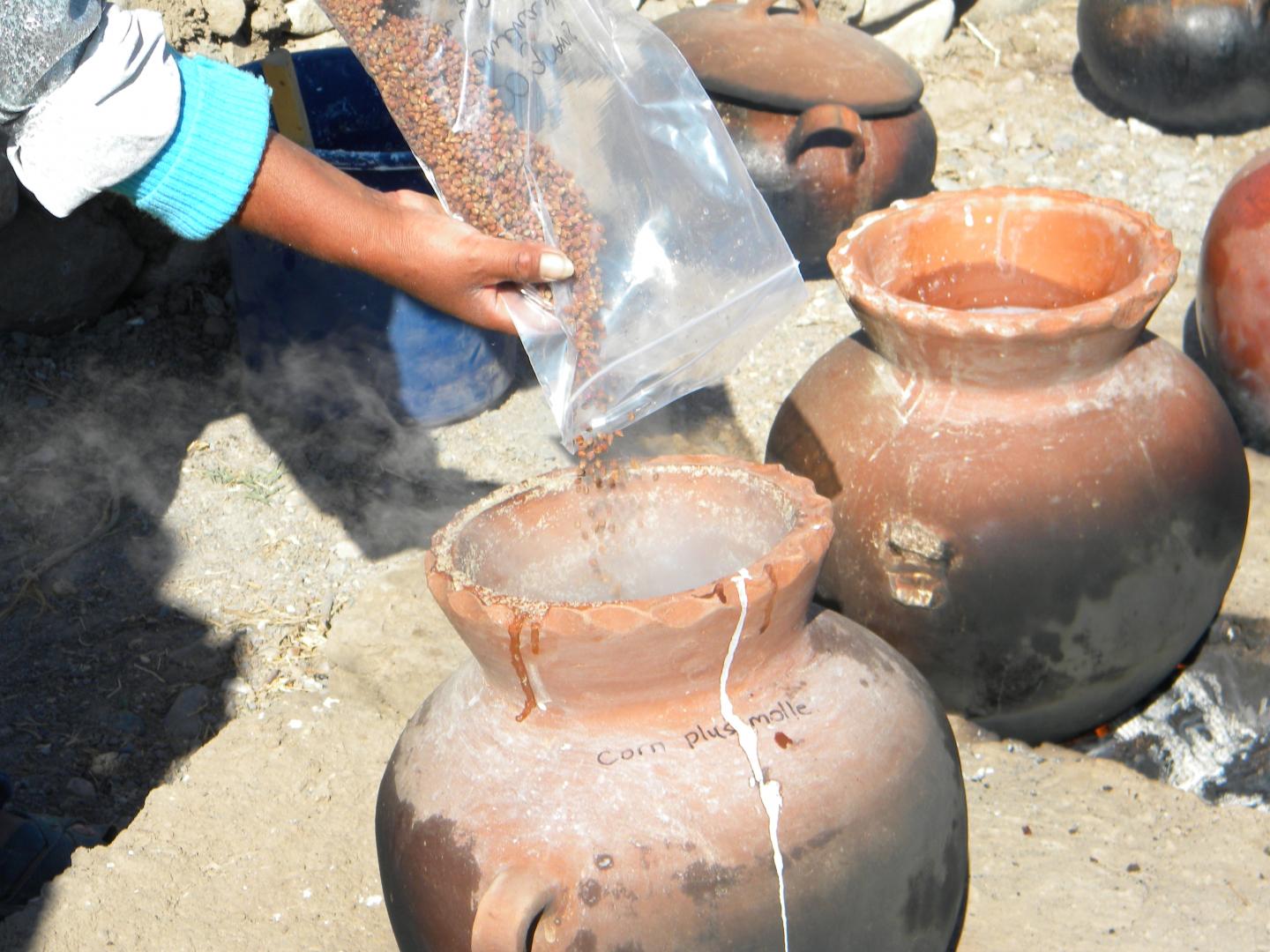Archaeologists recreate ancient brewing techniques to learn how beer kept an empire afloat

Credit: Donna Nash
A thousand years ago, the Wari empire stretched across Peru. At its height, it covered an area the size of the Eastern seaboard of the US from New York City to Jacksonville. It lasted for 500 years, from 600 to 1100 AD, before eventually giving rise to the Inca. That’s a long time for an empire to remain intact, and archaeologists are studying remnants of the Wari culture to see what kept it ticking. A new study found an important factor that might have helped: a steady supply of beer.
“This study helps us understand how beer fed the creation of complex political organizations,” says Ryan Williams, an associate curator and Head of Anthropology at the Field Museum and the lead author of the new study in Sustainability. “We were able to apply new technologies to capture information about how ancient beer was produced and what it meant to societies in the past.”
Nearly twenty years ago, Williams, Nash, and their team discovered an ancient Wari brewery in Cerro Baúl in the mountains of southern Peru. “It was like a microbrewery in some respects. It was a production house, but the brewhouses and taverns would have been right next door,” explains Williams. And since the beer they brewed, a light, sour beverage called chicha, was only good for about a week after being made, it wasn’t shipped offsite–people had to come to festivals at Cerro Baúl to drink it. These festivals were important to Wari society–between one and two hundred local political elites would attend, and they would drink chicha from three-foot-tall ceramic vessels decorated to look like Wari gods and leaders. “People would have come into this site, in these festive moments, in order to recreate and reaffirm their affiliation with these Wari lords and maybe bring tribute and pledge loyalty to the Wari state,” says Williams. In short, beer helped keep the empire together.
To learn more about the beer that played such an important role in Wari society, Williams and his co-authors Donna Nash (Field Museum and University of North Carolina Greensboro), Josh Henkin (Field Museum and University of Illinois at Chicago) and Ruth Ann Armitage (Eastern Michigan University) analyzed pieces of ceramic beer vessels from Cerro Baúl. They used several techniques, including one that involved shooting a laser at a shard of a beer vessel to remove a tiny bit of material, and then heating that dust to the temperature of the surface of the sun to break down the molecules that make it up. From there, the researchers were able to tell what atomic elements make up the sample, and how many–information that told researchers exactly where the clay came from and what the beer was made of.
“The cool thing about this study is that we’re getting down to the atomic level. We’re counting atoms in the pores of the ceramics or trying to reconstruct and count the masses of molecules that were in the original drink from a thousand years ago that got embedded into the empty spaces between grains of clay in the ceramic vessels, and that’s what’s telling us the new information about what the beer was made of and where the ceramic vessels were produced,” says Williams. “It’s really new information at the molecular level that is giving archaeologists this new insight into the past.”
To check that the ingredients in chicha could indeed be transferred to the brewing vessels, the researchers worked with Peruvian brewers to recreate the brewing process. “Making chicha is a complicated process that requires experience and expertise. The experiments taught us a lot about what making chicha would look like in the ruins of a building and how much labor and time went into the process,” says Donna Nash, an adjunct curator at the Field Museum and professor at the University of North Carolina Greensboro, who led the brewing recreation. (Incidentally, the Field Museum and Chicago’s Off Colour Brewing released a beer based on Nash’s work, a pink ale infused with pepper berries, called Wari Ale; it’s being re-released in Chicago-area stores and bars in June.)
By looking at the chemical makeup of traces of beer left in the vessels and at the chemical makeup of the clay vessels themselves, the team found two important things. One, the vessels were made of clay that came from nearby, and two, the beer was made of pepper berries, an ingredient that can grow even during a drought. Both these things would help make for a steady beer supply–even if a drought made it hard to grow other chicha ingredients like corn, or if changes in trade made it hard to get clay from far away, vessels of pepper berry chicha would still be readily available.
The authors of the study argue that this steady supply of beer could have helped keep Wari society stable. The Wari empire was huge and made up of different groups of people from all over Peru. “We think these institutions of brewing and then serving the beer really formed a unity among these populations, it kept people together,” says Williams.
The study’s implications about how shared identity and cultural practices help to stabilize societies are increasingly relevant today. “This research is important because it helps us understand how institutions create the binds that tie together people from very diverse constituencies and very different backgrounds,” says Williams. “Without them, large political entities begin to fragment and break up into much smaller things. Brexit is an example of this fragmentation in the European Union today. We need to understand the social constructs that underpin these unifying features if we want to be able to maintain political unity in society.”
###
Media Contact
Kate Golembiewski
[email protected]




